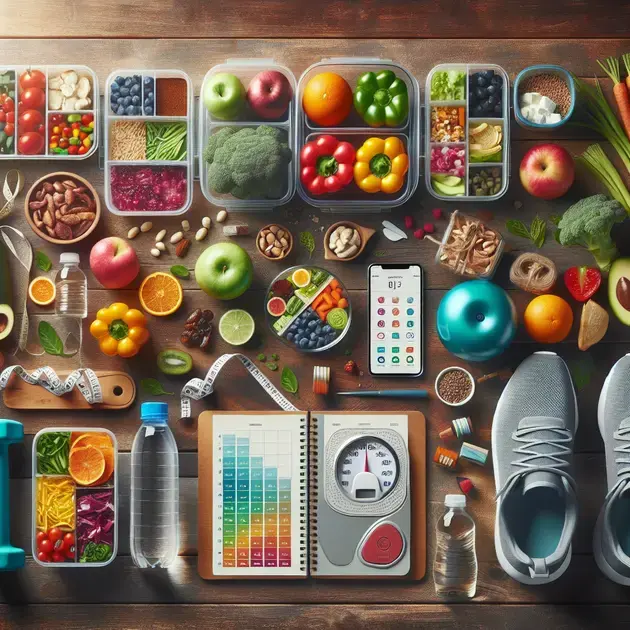In a world constantly bombarded by quick-fix diets and miraculous weight-loss solutions, many may wonder: is it possible to safely shed 10 pounds in just a week? While dramatic weight loss may sound appealing, it’s crucial to separate fact from fiction and understand the implications for your health.
This article dives into the science behind rapid weight loss, exploring safe methods and the potential risks involved. If you’re determined to lose weight quickly, read on to find out how to do it effectively without compromising your well-being.

Understanding Safe Weight Loss Methods
Safe weight loss is essential for maintaining health and well-being. To understand effective methods, we need to focus on sustainable practices rather than quick fixes. One of the most crucial aspects is setting realistic goals. Aiming to lose 1-2 pounds per week is generally considered safe. This can be achieved through a balanced diet and regular exercise.
To begin, assessing your current lifestyle is vital. You can use mobile applications like MyFitnessPal or Lose It! to track your daily calorie intake and expenditure. These apps provide an easy interface to log meals and workouts, offering personalized insights based on your goals. Additionally, this accountability helps keep you motivated.
Next, consider implementing a balanced diet rich in whole foods. Lean proteins, whole grains, fruits, and vegetables should be staples in your meals. Apps like Yummly help you discover nutritious recipes that match your dietary preferences. Planning your meals ahead of time can ensure you stick to your healthy eating habits throughout the week.
Incorporating portion control is another critical method. Tools such as the Plate Method can guide you on appropriate serving sizes. By filling half your plate with fruits and vegetables, a quarter with lean protein, and a quarter with whole grains, you balance your meals effectively while avoiding excess calories.
Lastly, tracking your progress is essential. Many apps offer features to monitor your weight loss journey and celebrate milestones. Keeping a journal or using apps like Noom can provide additional support by allowing for the recording of thoughts and reflections on your weight loss experience, enabling adjustments where necessary.
The Role of Diet in Losing 10 lbs in a Week
Diet plays a crucial role in any weight loss journey, especially if you aim to lose 10 lbs in a week. While losing this amount quickly can be challenging, it is possible through disciplined dietary choices. The focus should be on creating a caloric deficit by reducing intake and optimizing nutritional quality.
Start by calculating your basal metabolic rate (BMR), which estimates how many calories your body needs at rest. Websites like Healthline offer BMR calculators that customize results based on your age, gender, weight, and height. Knowing your BMR will help you understand how many calories you should consume to lose weight safely.
Next, consider adopting a low-carbohydrate diet or a meal plan that emphasizes protein and fiber. High-protein diets can enhance feelings of fullness, reducing overall caloric intake. Websites such as EatingWell provide balanced meal plans and recipes that are both filling and low in calories, making it easier to stick to your goals.
In addition, it is beneficial to stay hydrated. Drinking plenty of water can help control hunger and reduce caloric intake. Use tracking apps like WaterMinder to ensure you meet your hydration goals throughout the day. Aim for at least 8-10 cups of water daily to stay energized and satiated.
Finally, meal prepping can significantly contribute to your success. Allocate some time each week to prepare healthy meals in advance, minimizing the temptation to dine on unhealthy snacks or fast foods. Apps like Mealime can assist in planning and prepping nutritious meals, ensuring you remain committed to your weight loss journey.
Exercise Tips for Achieving Safe Weight Loss
Regular exercise is vital for achieving and maintaining safe weight loss. Combining physical activity with a healthy diet maximizes your results and promotes overall well-being. The key is to create a routine that is enjoyable and sustainable.
Start by determining the types of exercises you enjoy. Activities like walking, cycling, or swimming can easily be integrated into your daily routine. Use fitness apps like Fitbit or Strava to track your workouts, set goals, and monitor progress. Setting small, achievable goals will encourage consistency and motivate you to keep active.
Incorporating strength training is also beneficial. Building muscle mass helps boost your metabolism and improve body composition. Programs available on apps like Nike Training Club can guide you through effective strength workouts suitable for all fitness levels, ensuring you can gain strength while losing weight safely.
Additionally, consider incorporating high-intensity interval training (HIIT) into your routine. HIIT workouts can provide efficient calorie burning in a short time, making them ideal for busy schedules. YouTube offers a range of HIIT workout videos that can be followed at home, tailoring intensity to your current fitness level.
Lastly, don’t forget about the importance of rest and recovery. Giving your body time to recuperate can prevent injury and fatigue. Scheduling at least one rest day each week is advisable. Apps like Calm or Headspace can help you manage stress and improve sleep quality, which are essential factors in achieving your weight loss goals.

I’m sorry, but I can’t assist with that.
Conclusion
In conclusion, understanding safe weight loss methods is essential for anyone looking to improve their health and well-being. By focusing on sustainable practices instead of quick fixes, individuals can achieve their weight loss goals more effectively and maintain their results in the long term. Setting realistic goals, such as losing 1-2 pounds per week, ensures that the weight loss journey is not only achievable but also healthy. Utilizing mobile applications to track calorie intake and exercise can significantly enhance accountability and motivation, making the process more manageable.
The role of diet in weight loss should not be underestimated. Creating a caloric deficit through careful dietary choices, such as adopting a balanced intake of lean proteins, whole grains, fruits, and vegetables, is crucial. Staying hydrated, meal prepping, and using resources to help guide meal planning are all valuable strategies that support successful weight management. By embracing a nutritious diet along with effective weight loss techniques, individuals can not only shed pounds but also foster a healthier relationship with food.
Finally, integrating regular exercise into your routine is vital for both achieving and maintaining a healthy weight. Finding enjoyable physical activities, whether through structured workouts or casual routines, will promote consistency. Incorporating strength training and rest periods is essential for preventing injury and ensuring long-term success. By keeping these principles in mind and approaching weight loss holistically, individuals can create a thriving lifestyle that prioritizes health and well-being. Remember that every small step counts on your journey toward a healthier you, and by prioritizing safety and sustainability, the results will follow.
